LESSON 40: Sorting It Out: Shape and Smell
THINK ABOUT IT
So far the investigation into the chemistry of smell has turned up evidence that molecular formula, functional group, chemical name, and the overall shape of molecules can help predict smell. Which pieces of information are most useful? What should you consider first?
What chemical information is most useful in predicting the smell of a compound?
To answer this question, you will explore
A Summary of the Smell Investigation So Far
General Rules for Predicting Smell
A Summary of the Smell Investigation So Far
EXPLORING THE TOPIC
A Summary of the Smell Investigation So Far
Clearly, the relationship between molecules and smell is quite complex. Often, when you smell and examine new molecules, you find out new information and refine your hypotheses. Here is what you might conclude about smell so far.
MOLECULAR FORMULA
Molecular formulas can give some indication of the way compounds smell.
PSYCHOLOGY CONNECTION
PSYCHOLOGY
CONNECTION
Scientists have found that memories evoked by specific smells seem to be stronger and more emotion-based than memories brought up by visual or auditory cues. The exact connection between smell and memory is unclear, but sensations from the smell receptors in the nose travel to areas of the brain that deal with memory.
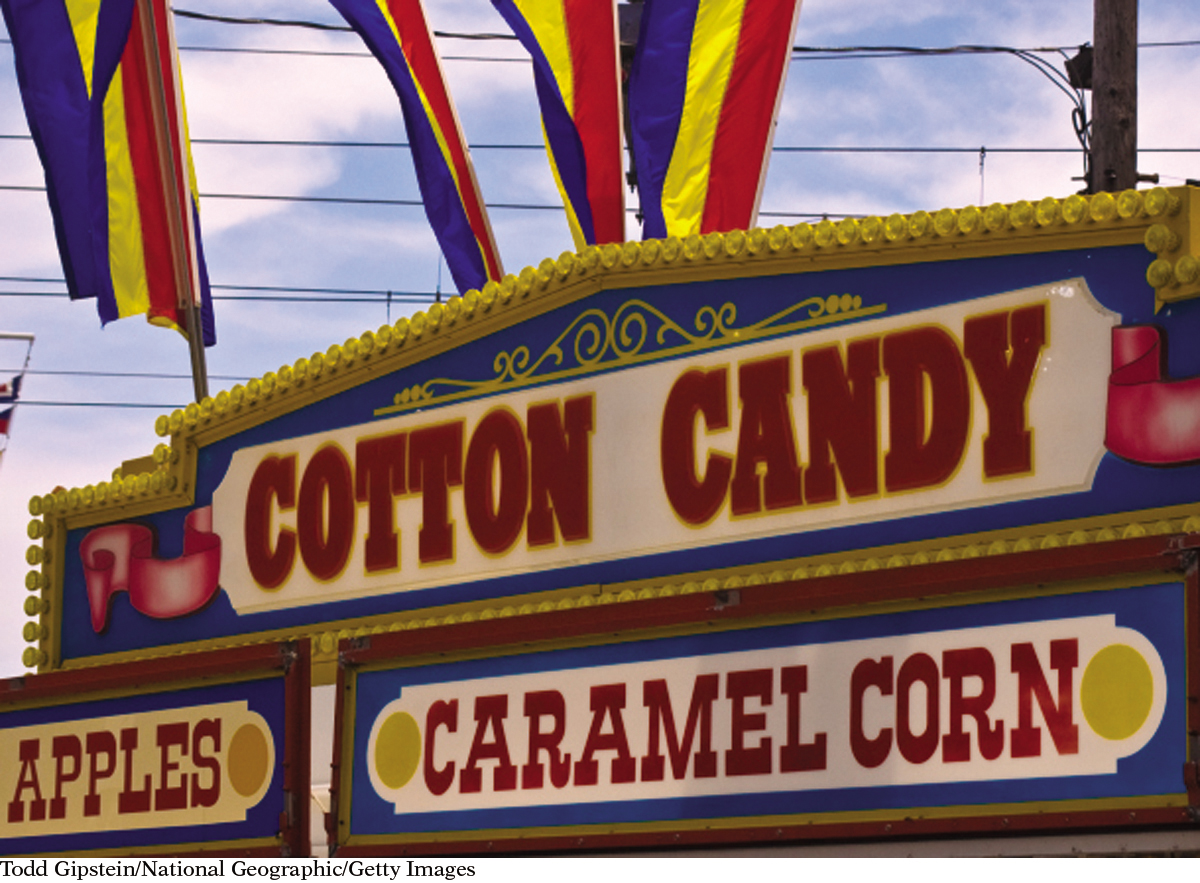

Molecular formula is most useful in predicting fishy smells. It does not work so well for sweet, putrid, minty, or camphor smells.
FUNCTIONAL GROUP
Functional groups are even better than molecular formulas in narrowing down a smell. For example, compounds with a carboxyl functional group smell putrid. Compounds with an ester functional group smell sweet.

CONSUMER CONNECTION
CONSUMER
CONNECTION
Citronella oil has been used for decades as an insect and animal repellent. It is found in candles, lotions, gels, and other products designed to repel mosquitoes and other pests.

Because alcohols and ketones might smell sweet, minty, or like camphor, functional group is not always correct in predicting smells.
CHEMICAL NAME
Molecules are named according to their functional groups. A carboxylic acid molecule, for instance, will have a chemical name ending in “-ic acid.”
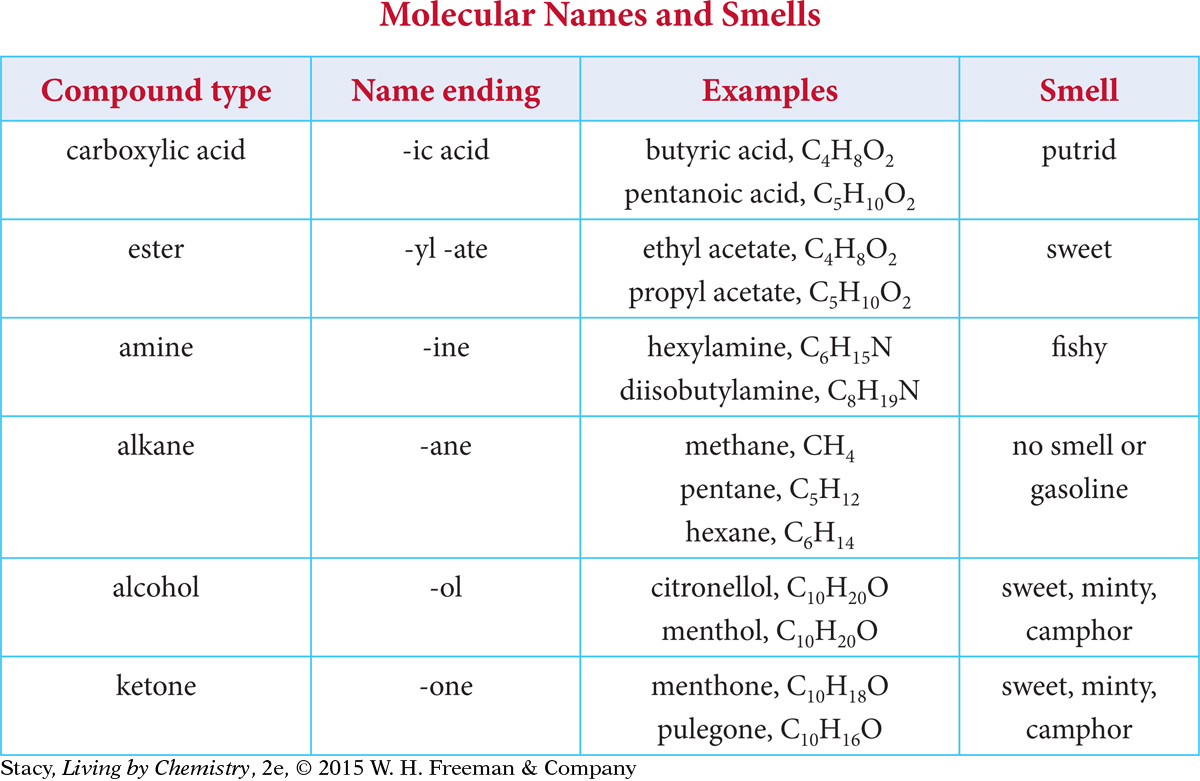
Because the functional group is not useful in predicting smells for alcohols and ketones, the chemical name is also not very useful.
MOLECULAR SHAPE
The overall shape of a molecule can be an important link to smell. Camphor-smelling compounds are made of ball-shaped molecules. Minty-smelling compounds are flat in overall shape. And compounds made of long and stringy molecules often smell sweet.
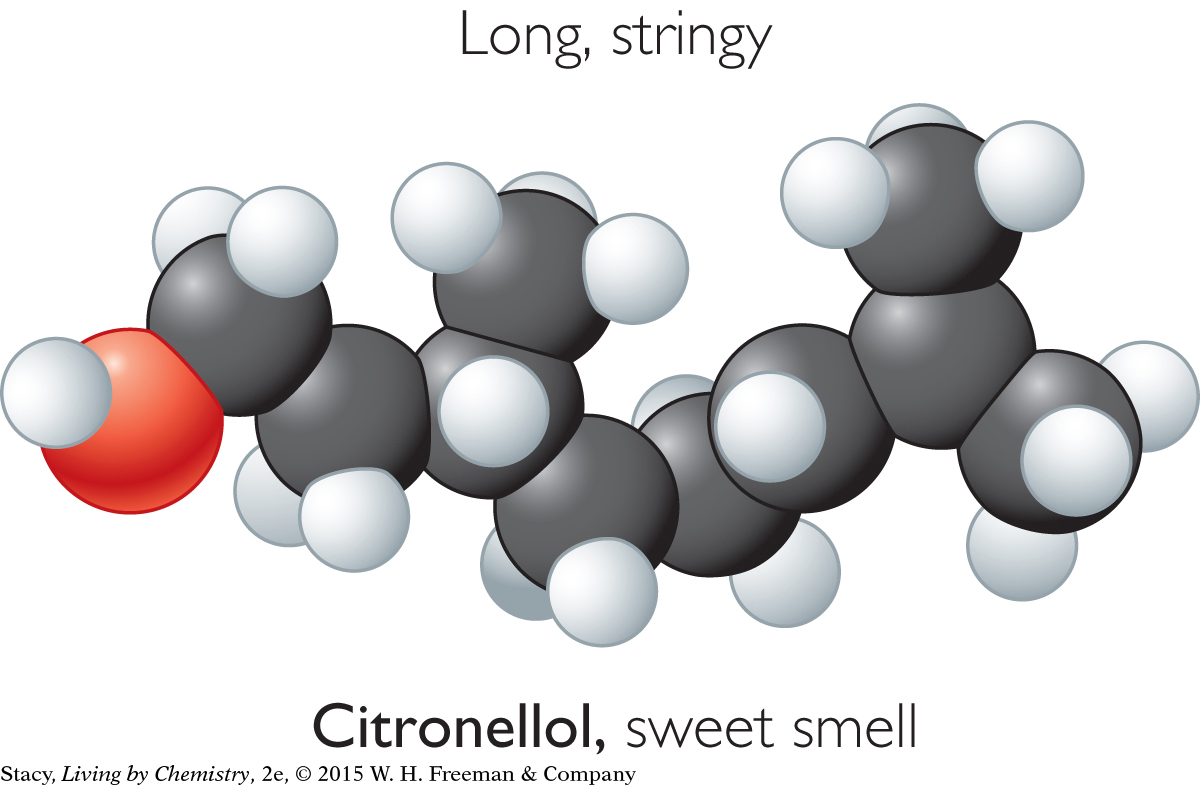
|
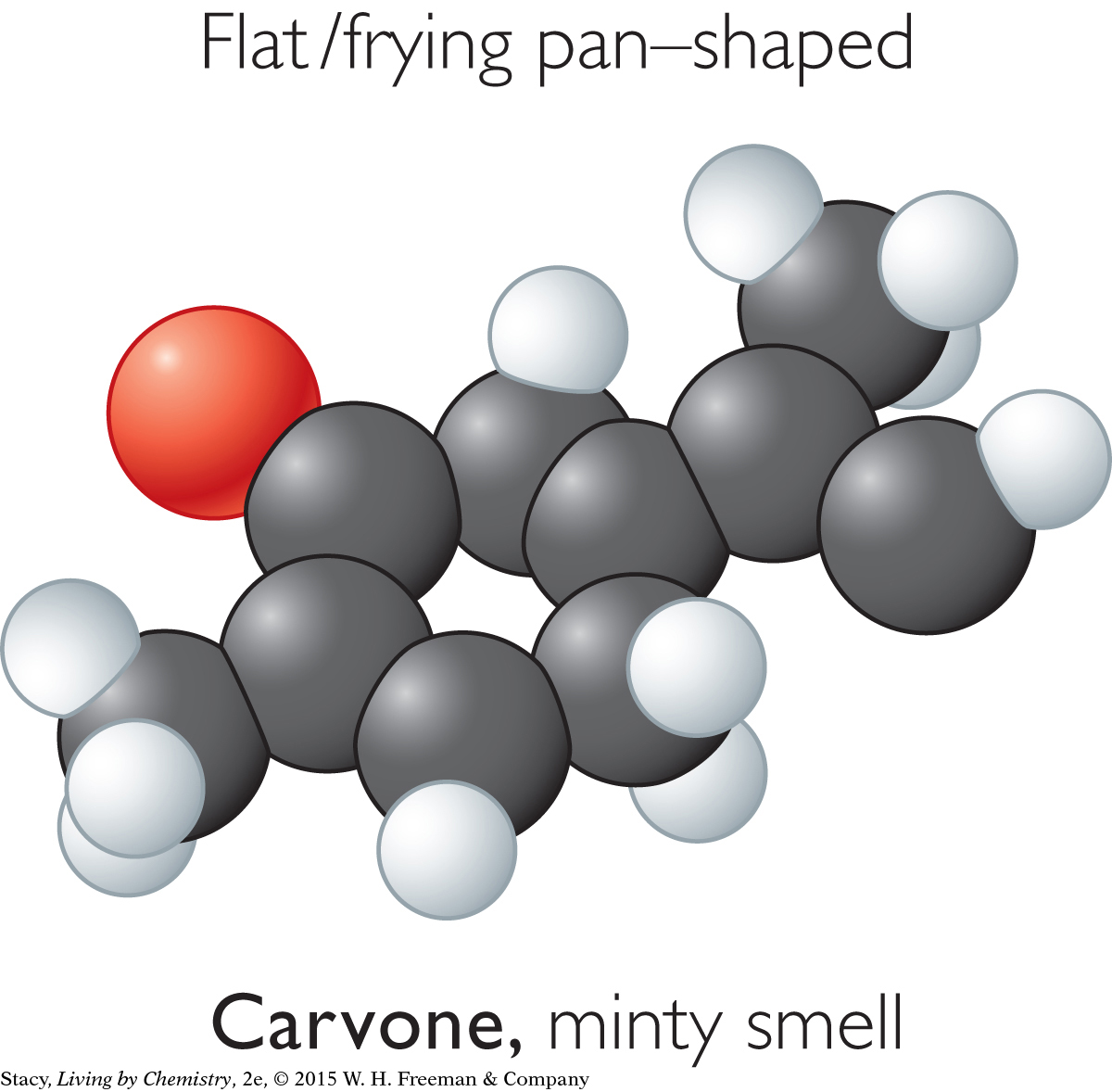
|
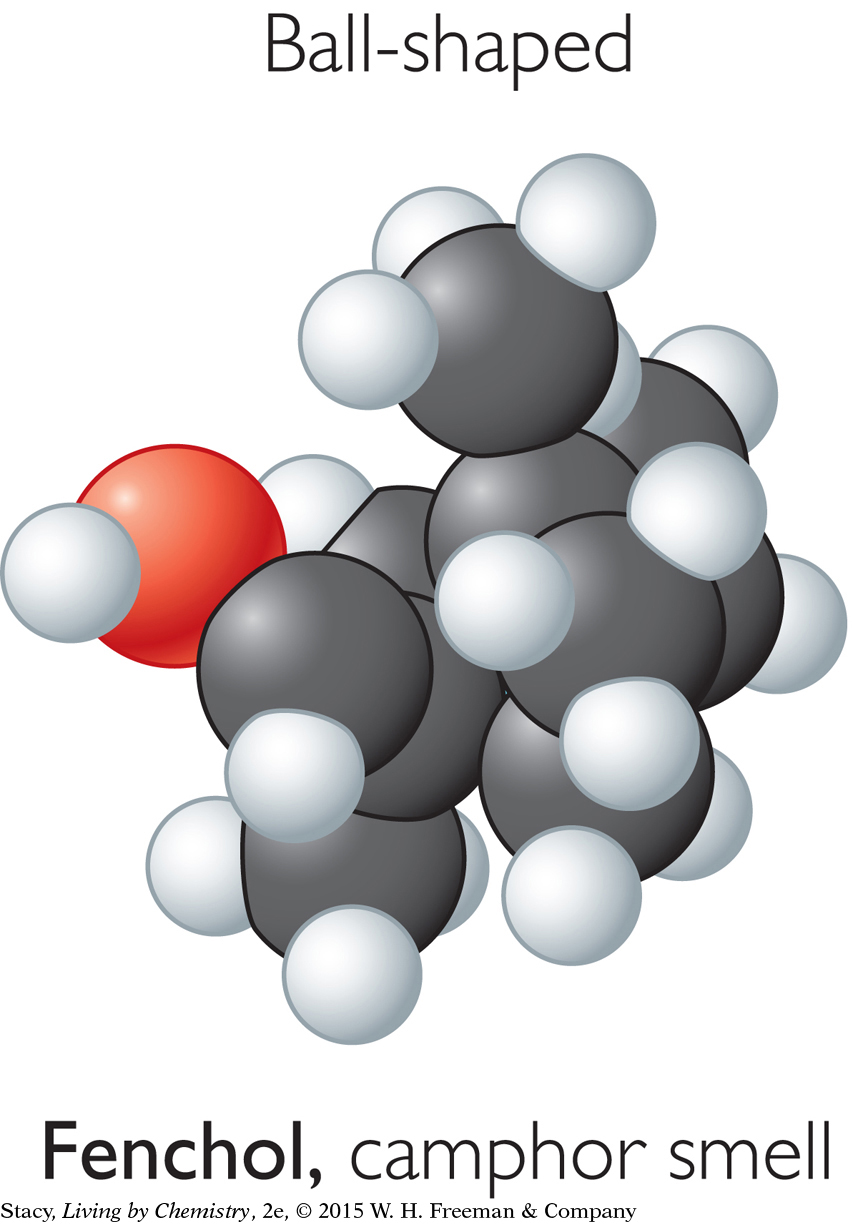
|
General Rules for Predicting Smell
General Rules for Predicting Smell
Each piece of chemical information appears to be valuable at different times, depending on the smell category. It is helpful to look for general guidelines you can use to predict smell.
This table summarizes the chemical information of each of the five smell categories you have encountered. In each category, the most useful information for predicting that smell has been highlighted.
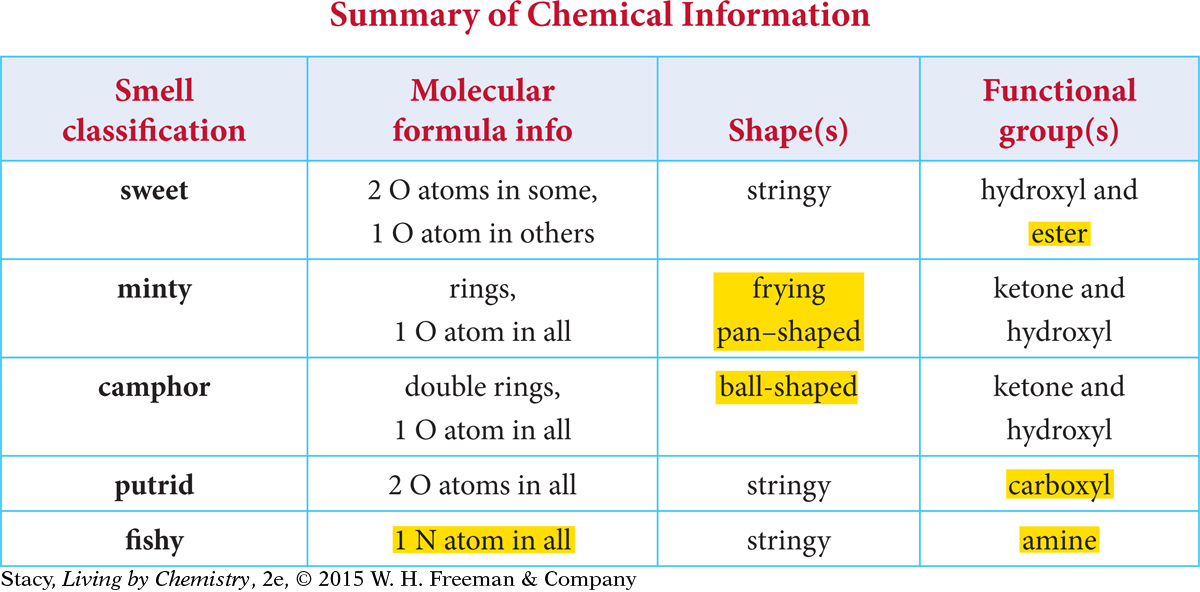
The only category that causes a little trouble is the sweet-smelling category. Not every compound made of stringy molecules is sweet smelling. But, if the compound has stringy molecules and is not a carboxylic acid or an amine, then it is sweet smelling.
Example
Predict a Smell
Examine the following molecular compound and predict its smell. What information is most useful in predicting the smell? What type of compound is this?
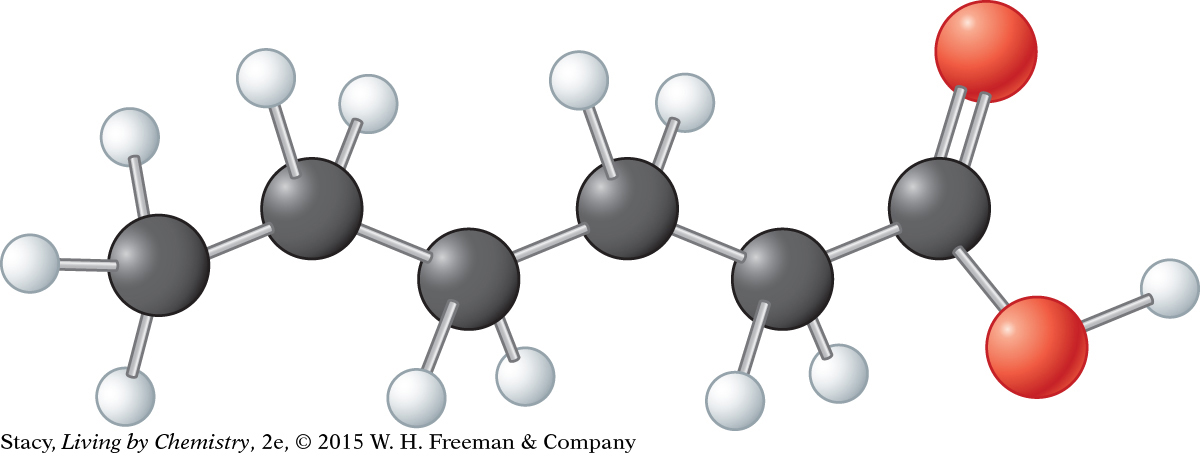
|
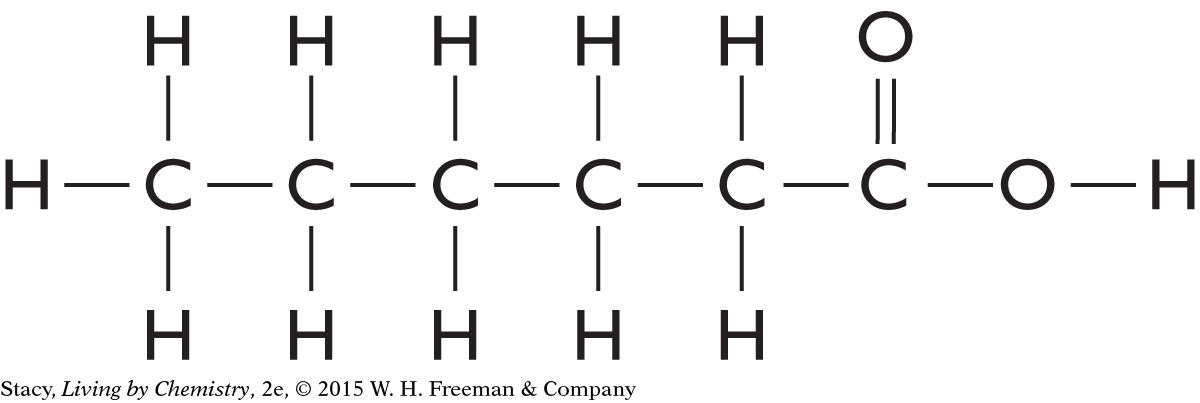
|
Solution
Here is what you can deduce:
Molecular shape: Because the molecule is stringy, it probably does not have a minty or camphor smell. Its smell may be sweet, putrid, or fishy.
Molecular formula: There is no N atom, so its smell can’t be fishy. It has two O atoms, so it might have a sweet or putrid smell.
Functional group: The carboxyl functional group indicates that the molecule smells putrid.
The putrid smell and carboxyl group indicate that this is a carboxylic acid.
The functional group was most useful in predicting the smell of this compound.
LESSON SUMMARY
LESSON SUMMARY
What chemical information is most useful in predicting the smell of a compound?
By looking for patterns in the chemical information of molecules, it is possible to come up with general guidelines for certain smell categories. Some chemical information is more useful than other information depending on the smell category. Molecular shape is an accurate predictor for minty and camphor compounds. Functional group can be used to predict the smells of amines and carboxylic acids. Each piece of chemical information, including chemical formula and name, allows you at least to narrow down the possible smells of a compound.
Exercises
Reading Questions
Can the molecular formula of a compound help you to predict its smell? Explain your reasoning.
What one piece of chemical information would you want in order to predict the smell of a molecule? Explain your choice.
Reason and Apply
What is the minimum amount of information you need to know to determine if a compound smells sweet?
If someone tells you a compound smells sweet, what can you assume about its molecules? What can’t you assume about its molecules?
If someone told you a compound was made of molecules that had a stringy three-dimensional shape, what else would you want to know to determine that compound’s smell?